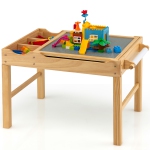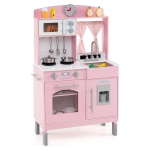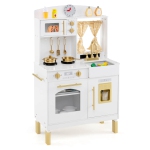Activity Tables
53 results
Entertain kids and babies with an activity table
Keep kids and babies entertained for hours with a fun and educational activity table that's suitable for their age.
What are the benefits of having an activity table?
An activity table can provide hours of fun and entertainment for babies and kids, plus help with dexterity and fine motor skills. They promote exploration, curiosity, and imaginative play.
Activity tables are a dedicated spot for a child to have some fun; it's their own little nook. They can learn while exploring a variety of surfaces, textures, knobs, buttons, and materials, and play with related activity table toys that often come with the tables.
Helping stimulate movement, which, in turn, aids babies and toddlers in developing important muscles in their body, activity tables for babies can also function as a surface on which toddlers can pull themselves up as they learn to stand and walk. No matter the age, activity tables can also keep a baby or child's attention so you can tend to quick chores or tasks as needed.
What types of activity tables are available?
Activity tables are suitable for kids aged 3 up to 10 with some designed for babies, toddlers, and kids from ages 1.5 to 5. For babies who can't yet walk or stand, activity "tables" might be soft and comfortable playmats where they can lie down or sit and play with baby-safe toys.
Many activity tables are made of plastic, but you can also find wooden activity tables for older kids. These often include built-in storage and reversible covers that feature a train track on one side, for example, and LEGO baseplates on the other. The focus is on imaginative play.
Children's play tables come in many themes for pretend play, from workbenches with tool sets to a chef's station for pretend play in the kitchen, or even ones shaped like cars with hidden storage for toy cars. There are also activity tables for water and sand, best for use outside during the warmer months.
What is the difference between an activity table for babies versus for kids?
Activity tables for younger kids and toddlers are, as noted, often made of plastic and employ simpler designs, rounded and smooth edges, brighter colours, and come with larger-sized toys toddlers can easily grip. These are sensory tables designed to be safe without small pieces that can end up in a baby's mouth nor small gaps where tiny fingers can get stuck.
Play tables for smaller kids will also, in turn, be smaller, sitting lower to the ground so smaller children can reach the top. They are also designed to be extra durable whereas activity tables for older kids, especially wooden activity tables, sometimes look more like furniture.
When it comes to activity tables for older kids, you'll find smaller, more intricate pieces, like toy trains, building pieces, or cooking supplies for pretend play. Activity tables for older kids might better blend in with the décor as well.





